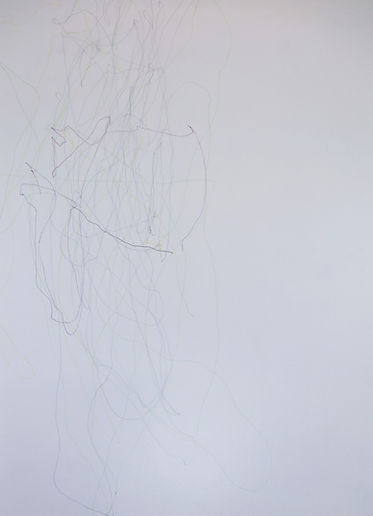Currently, I am finalizing about 20 new additions to my Pharmacopoeia series.
Mark Allen Soderstrom
CREATIVE PROJECTS

Automatic Drawing #5
Mark Allen Soderstrom and Kelly Leal
36" x 30"
Automatic Drawings, 2007
Colored pencil and graphite on rag paper, laminated and mounted to rag board on wood panel.
What we know today as the Ouija® Board has several contemporary relatives and numerous historical roots.
It was in the midst of the movement of Spiritualism from the 1840’s to the 1920’s that Elijah Bond and Charles Kennard decided to market a windowed planchette (mobile pointing device) along with a pre-numbered and lettered board. Prior to this, automatic writing or drawing was done freehand or with a planchette affixed with a writing implement as the commonly perceived method of channeling spirits.
These processes were widely popular and used by surrealist artists such as Andre Breton, and authors including Pearl Lenore Curran (channeling Patience Worth), Sylvia Plath, James Merrill, and Neale Donald Walsch. William Griffith Wilson, the founder of Alcoholics Anonymous, claimed he received the group's twelve steps directly from a spirit in a similar manner.
These drawings were done in collaboration with others by following contemporary proponents’ instructions for spirit communication while using a planchette with affixed writing device.
Physiology would explain these documented movements as unconscious and involuntary ideomotor movement by participants, while spiritualism would explain them as proof of communication with non-human/living entities.

Automatic Drawing #4
Mark Allen Soderstrom, Eric Gurney, and Nancy Tobin
47" x 32"

Automatic Drawing #2
Mark Allen Soderstrom and Wade Badger
40 1/2" x 29 1/2"


Automatic Drawing #1
Mark Allen Soderstrom, Brent Jenkins, and Jennifer McFadden
36" x 30"
Automatic Drawing #3
Mark Allen Soderstrom and Wade Badger
35 1/2" x 31"
